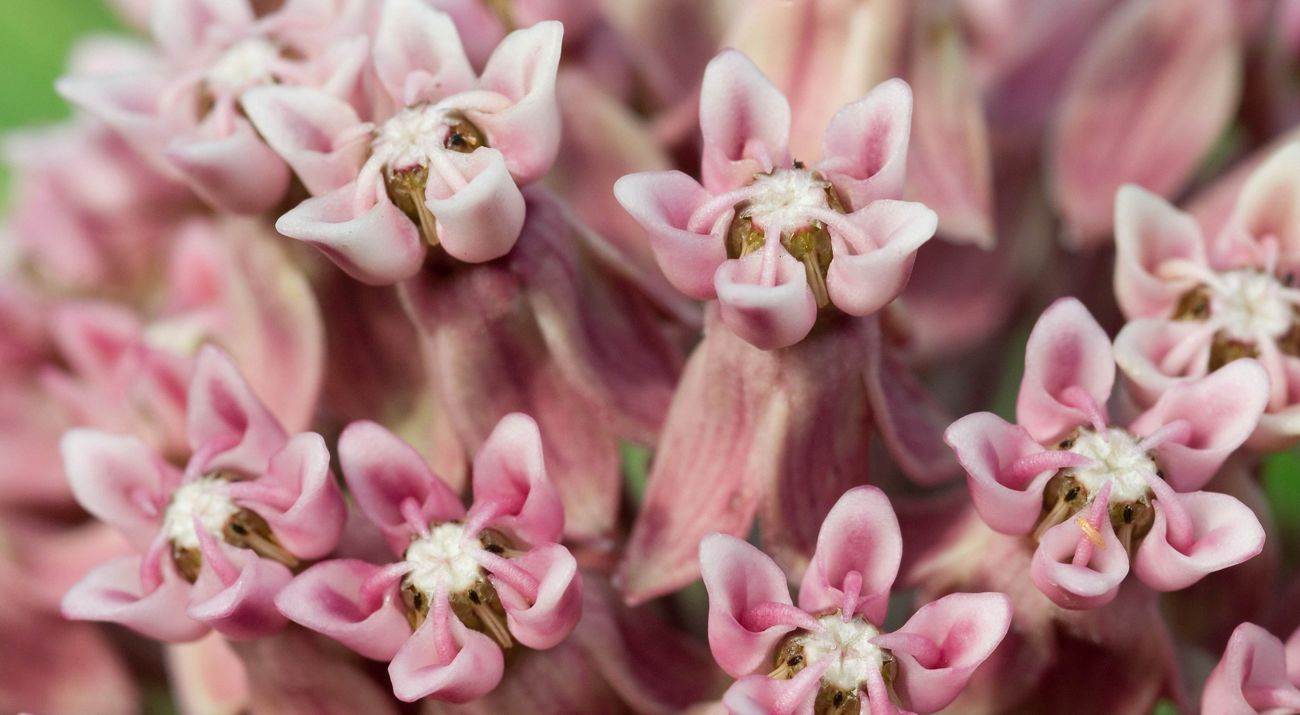Using native plants and trees in landscape settings helps Oklahoma’s native wildlife flourish and prevents the spread of invasive species and the problems they can cause.
Check out our suggestions and share with your friends!
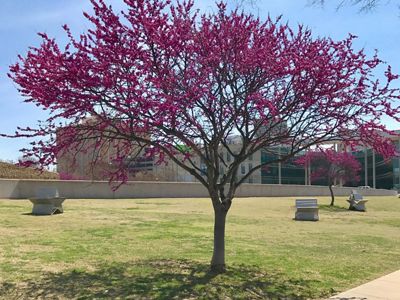
PLANT a Redbud Tree, NOT a Bradford Pear
An often-planted ornamental tree – the Bradford pear – has become an invasive species that harms Oklahoma’s native plants and trees that support our native wildlife.
- Bradford pears spread quickly and outcompete many Oklahoma native plants and trees. Their prolifically produced fruits are taken by birds and dispersed across our native landscapes.
- Bradford pears are regularly damaged or killed by Oklahoma’s strong winds, ice storms, and heavy snow due to weak wood that results from their naturally excessive growth rates, costing landowners time and money in maintenance.
Oklahoma's state tree, the Redbud, is a great native alternative. For spring blooms, the redbud tree is a showy and reliable native. The shiny, heart-shaped leaves on redbuds are attractive on the low-branching stems, and emerge after the spectacular blooms of spring have faded. Redbuds make wonderful trees for urban areas, due to their moderate size, broad-spreading canopies, and low maintenance requirements. The Redbud is an extremely adaptable species, able to tolerate poor soils, hot temperatures, drying winds, full sun or partial shade, as well as moist conditions.
Other native alternatives to consider in place of Bradford pears, include roughleaf dogwood, seaside alder or river birch.
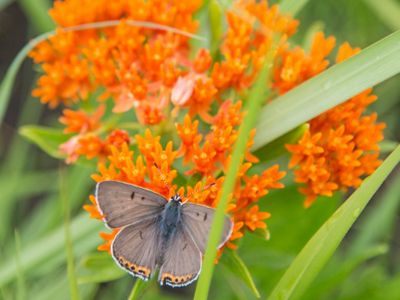
PLANT Native Milkweed NOT Easter Lilies
Easter Lilies are a beautiful plant native to the southern islands of Japan. The recognizable white flowers bloom naturally around June-July, but are typically forced into early blooming to be sold around Easter. Easter Lilies are not made to withstand the harsh temperatures of Oklahoma summers and they require careful watering.
Rather than planting the non-native Easter lily, plant native milkweed instead.
Of the 73 milkweed species in the U.S., 20 are native to Oklahoma. Native milkweed plants come in a variety of colors such as white, orange, and brilliant shades of pink. Monarch butterflies are dependent on the plants, which serve as a host for eggs, caterpillars and some supply nectar for adult butterflies. The monarch butterfly population has dropped by ninety percent due to habitat loss, but planting native, monarch-friendly milkweed can help reverse this damage.
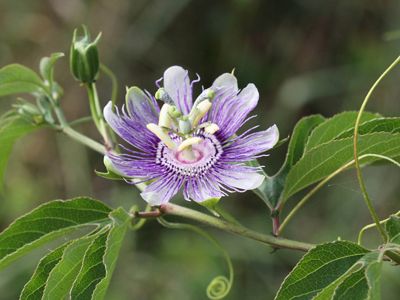
PLANT Passion Vine, NOT Honeysuckle
Japanese honeysuckle is a common vine around Oklahoma because it is easy to grow, heat-tolerant, and nearly indestructible. In addition, the attractive and fragrant flowers attract hummingbirds, butterflies and other pollinators.
So what could be so bad about this flowering vine? Honeysuckle, being non-native, has few natural enemies, which allows it to spread rapidly and out-compete native species. Shrubs and young trees can be killed by its vines that twist tightly around stems and trunks, cutting off the flow of water and nutrients through the plant. Honeysuckle’s dense cover can block sunlight from reaching other plants’ leaves.
Instead, try planting the passionflower vine.
Passionflower vine, or Passiflora incarnata, is native in the southeastern U.S. west to Oklahoma and Texas. Like honeysuckle, passionflower vine grows quickly and fervently. It also attracts hummingbirds, bees, and butterflies, making it an excellent and comparable substitute for honeysuckle. The flowers are visited by butterflies such as the variegated fritillary which lay eggs on the stems and leaves, permitting the entire lifecycle of these beautiful pollinators to transpire there.
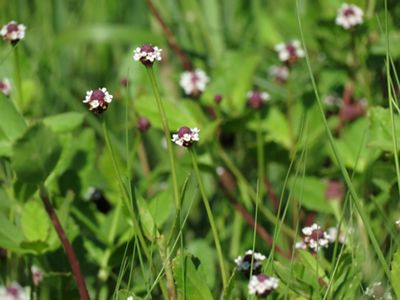
PLANT Frogfruit, NOT Periwinkle
Periwinkle, also known as Vinca, is a flowering plant that's commonly sold as an ornamental ground cover. The plants are grown for their attractive glossy, green foliage, as well as their white, pink, and red flowers. They are heat and drought tolerant, and provide thick, attractive foliage. Though as beautiful and harmless as Periwinkle may seem, it is a non-native and very invasive species. The plant, which is native to Europe and Asia, has invaded natural areas throughout the eastern U.S., displacing native herbaceous and woody plant species.
Rather than planting the non-native periwinkle, plant native frogfruit instead.
Consider planting another ornamental ground cover, frogfruit, which is native to the southern United States. A perennial in cool climates and an evergreen in warmer climates, it spreads horizontally by runners that will root into the soil where they lay on the ground. Like Periwinkle, it is a hardy plant, being both drought and flooding tolerant, that spreads vigorously which makes it an excellent groundcover. It boasts beautiful purple, pink and white flowers.
Bonus: Frogfruit makes a great nectar source for butterflies and bees!

PLANT Golden Currant, NOT Nandina
Nandina, also known as "heavenly bamboo," is a popular ornamental shrub that is native to Japan, China, and India. The shrub is an evergreen that can be tinged red in winter and has white-to-pink flower clusters in the summer. It grows to a height of 6-10 feet and has a nearly impenetrable network of thick roots that keeps expanding every year. Nandina is an extremely hardy and tolerant plant, and is immensely easy to grow. It is also nearly impossible to remove as the roots run thick and deep, plus every little piece of root you leave behind grows another plant. Unfortunately, Nandina has naturalized and invaded native wildlife habitats. It colonizes by spreading underground root sprouts and by animal-dispersed seeds. It can persist as a seedling for several years before maturing. It can also displace native species and disrupt plant communities and its berries can be toxic to dogs, cats, and some grazing animals.
Rather than planting nandina, try planting golden currant, also known as buffalo currant, which is native to the central US.
It is a deciduous, shrub that grows 6-8 feet tall. The plant is a bluish-green in the summer, and turns a lovely yellow-red in the autumn, and boasts small, fragrant yellow flower clusters in late April to early May. Like Nandina, Golden Currant is hardy and easy to grow. It even produces a sweet and flavorful black berry that is popular for making jam, jelly, pie, and even ice cream.
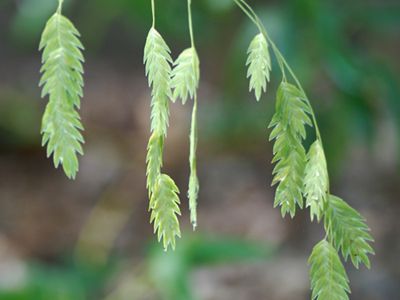
PLANT Sea Oats, NOT Ravenna Grass
A native of the Mediterranean, Ravenna grass is a perennial bunchgrass with six-foot tall blades surrounding towering, bamboo-like flowering canes which may exceed 10 feet in height. The feathery plumes contain countless seeds, enabling the plant to spread quickly. Ravenna grass is relatively cold-tolerant and can grow in many conditions making them a sturdy ornamental grass.
However, Ravenna grass establishes itself with little disturbance required, putting intact plant communities at risk. It can form impenetrable monocultures, growing out from beneath other vegetation before outcompeting the native plant community. Ravenna grass can also act as a physical barrier to stream flow.
In place of Ravenna, try planting Inland sea oats (also known as Indian wood oats or fish-on-a-pole grass).
It is quite popular as a low-maintenance shade grass, and is notable for its large, graceful seedheads. Sending up blue-green basal leaves in earliest spring, it can grow 2-4 feet tall and be a vivid green by May, with translucent green seedheads swaying in the breeze. It reseeds easily and can expand aggressively within a couple of years, making a solid mat in moist loams. It has been used to prevent soil erosion along streams. Bonus: the seed stalks are attractive additions to flower arrangements!
Support Our Work
Donate now to help ensure a thriving natural environment for future generations in Oklahoma.
